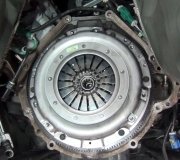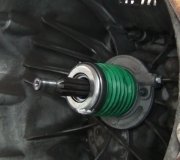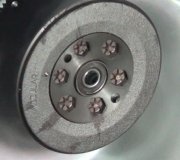Hi and thanks for using 2CarPros.
I notice you replaced a lot of things. However, you didn't mention the slave cylinder. Was that replaced too?
Here are the shop procedure directions for bleeding the system. Check it and let me know if this is what you have already done. Also, if the slave has been replaced, have you checked to confirm there are no leaks?
Hydraulic Clutch Bleeding
Special Tools
* J 35555 Metal Mityvac
* J 43485 Power Steering Bleeder Adapter
1. Verify that all the lines and fittings are dry and secure.
2. Clean the dirt and grease from the reservoir cap in order to ensure that no foreign substances enter the system.
3. Remove the reservoir cap.
4. Fill the reservoir to the proper level with the required fluid.
Some manual transmission equipped vehicles have a combined brake and clutch fluid reservoir.
5. Attach the J 43485 to the J 35555, or equivalent.
Note: Brake fluid will deteriorate the rubber on the J 43485. Use a clean shop cloth to wipe away the fluid after each use.
6. Place and hold the adapter on the reservoir filler neck to ensure a tight fit. In some cases, the adapter will fit into the reservoir opening.
7. Apply a vacuum of 51-68 kPa (15-20 hg) and remove the adapter.
8. Refill the reservoir to the proper level.
9. Repeat steps 6 and 7.
10. If needed, refill the reservoir and continue to pull a vacuum until no more bubbles can be seen in the reservoir or until the fluid level no longer drops.
Warning
The vehicle will move if started in gear before the Actuator Cylinder is refilled and operational. Start the vehicle the first time in neutral to help prevent personal injury from vehicle movement and see if the transmission will shift easily into gear.
11. Pump the clutch pedal until firm (to refill actuator cylinder).
12. Add additional fluid if needed.
13. Test drive the vehicle to ensure proper operation.
Let me know if this helps or if you have other questions.
Joe
Thursday, January 31st, 2019 AT 6:30 PM


